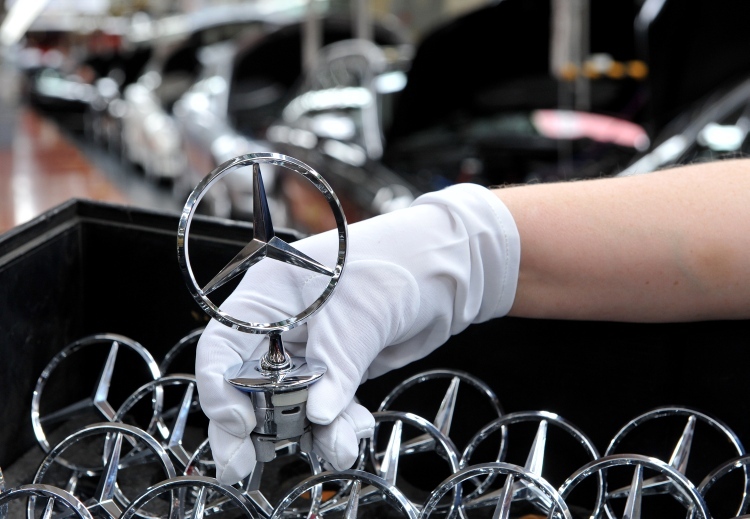Bremen in Numbers
Facts and figures on the two-city state of Bremen
Did you know that ...
... Bremen is one of Germany’s leading industrial hubs? That the cities of Bremen and Bremerhaven together make up the federal state of Bremen? Travel for about an hour – and around 60 kilometres – through Lower Saxony and you end up back in Bremen.
We have put together a selection of other useful information and figures about Bremen and Bremerhaven, the local people and the business location for you.
- The federal state of Bremen has a population of around 681,000.
- The city of Bremen has a population of around 566,000.
- The metropolitan region of Bremen/Oldenburg has a population of around 2.8 million.
federal state of Bremen
city of Bremen
metropolitan region
- Bremen’s Chamber of Commerce (1451) and Chamber of Skilled Trades (1849) are the oldest in Germany.
- The export ratio, which is the share of sales to foreign customers in total sales, was with 22,5 billion euros at 56,2%.
- Industrial companies in the federal state of Bremen increased their sales by 31,5% to just under 35 billion euros in 2022.
- The federal state of Bremen had the second-highest economic growth of all the federal states in 2021 at 6,1% and the highest in 2022 at 5,1%.
- The Mercedes-Benz plant in Bremen is the world's second largest production facility of the Mercedes-Benz Group, with around 12,000 employees and 277,000 vehicles produced (as of 2024).
- In June 2024, the 10 millionth vehicle rolled off the production line at the Bremen plant.
- The world’s most popular beer is brewed in Bremen – with some 3,000 bottles of Beck’s beer being drunk every minute.
- Bremerhaven container terminal is the fourth-largest in Northern Europe and among the 25 largest in the world.
- Bremen is the second-largest port for car transshipment in Europe. The transshipment volume was around 1,6 million vehicles.
- Bremen has more than 1,300 industrial companies and service providers in the maritime sector.
- Bremen is the second-largest production and development site in Germany for Europe’s Airbus Group.
2023: 56,2%
2022: plus 31,5%
12,000 employees
1.6 mil. vehicles
- Bremen has nine universities and colleges with around 40,000 students (2023).
- Around 50 technology research institutes (Fraunhofer and Max Planck institutes, German Aerospace Centre and German Research Centre for Artificial Intelligence) are based in Bremen.
- The Alfred Wegener Institute is based in Bremerhaven.
- The drop tower at Bremen University’s Center for Applied Space Technology and Microgravity (ZARM), a huge laboratory where zero-gravity experiments are performed, is unique in Europe.
- Bremen is the greenest city in Germany.
- There are eleven lakes for swimming in Bremen.
- Bremen has four rivers: the Weser, Wümme, Ochtum and Lesum.
- The river Weser and its embankment are a popular leisure destination.
- The Weser promenade Schlachte with the ships and around 2,000 beer garden seats has an estimated 2 million visits annually.
- Bremen has a number of nature conservation areas.
- Bremen's Christmas market and Schlachte magic have around 3.4 million visits annually.
Museums in Bremen and Bremerhaven | Visits 2022:
(Source: Statistisches Landesamt Bremen)
- Universum Bremen 218.447
- Kunsthalle Bremen 88.384
- Übersee-Museum Bremen 83.426
- Focke-Museum, Bremer Landesmuseum 48.678
- Botanika - Science Center im Rhododendronpark 91.925
- Weserburg Bremen - Museum für moderne Kunst 18.816
- Dom-Museum im St.-Petri-Dom Bremen 20.690
- Kunstsammlungen Böttcherstraße 26.526
- Gerhard-Marcks-Haus - Bildhauermuseum 15.365
- Wilhelm-Wagenfeld-Haus - Design im Zentrum 14.293
- Klimahaus 8 Grad Ost 380.601
- Bremerhaven Zoo am Meer 331.895
- Deutsches Auswandererhaus Bremerhaven 126.924
- Deutsches Schifffahrtsmuseum 46.562
- U-Boot-Museum 97.366
- Historisches Museum Bremerhaven 23.318
All tourist highlights and offers can befound on Bremen's city portal pages.
- In 2023, the federal state of Bremen welcomed 1,456,320 arrivals and the city of Bremen welcomed 1,209,853 arrivals.
- There were 2,807,077 overnight stays in the federal state of Bremen and 2,359,490 overnight stays in the city of Bremen in 2023.
- The city has around 37 million day visitors a year (2023).
- Around EUR 1.8 billion in gross revenue was generated through day and overnight tourism.
- There are 110 hotels with 15,995 beds in the federal state of Bremen and 89 hotels with 13,245 beds in the city of Bremen. (2023)
- 220,000 passengers embarked or disembarked at the Columbus Cruise Center in Bremerhaven in 2022.
- Bremen’s Roland statue and the town hall have UNESCO World Heritage status.
- The famous fairytale figures of the Bremen Town Musicians are immortalised in a bronze statue near the town hall. In 2019, Bremen celebrated the story’s 200th anniversary.
- The Breminale music festival is one of the four largest festivals in Germany (based on visitor numbers).
- The Rhododendron Park has 3,500 cultured varieties from almost 650 different species, making it the world’s largest collection of rhododendrons.
- Werder Bremen football club occupies third place in the all-time Bundesliga standings. The club’s stadium Weserstadion is located next to the river Weser.
- The Grün-Gold-Club Bremen and the TSG Bremerhaven are among the world's top dance clubs, with over 25 world championship titles between them.
- Bremen is the leading cycling city after Copenhagen and Amsterdam.
- Decaffeinated coffee was the invention of Bremen merchant Ludwig Roselius.
- Henrich Focke invented the first fully operational helicopter.
- The ARD, West Germany’s first public-service broadcaster, was founded in Bremen on June 10th, 1950.
- Bremen's TV show ‘3nach9’ was Germany’s first talkshow.
- in 1949, Bremen shoemaker Alexander Salot invented the screw-in stud mechanism for football boots.
- The rollo, a type of baked falafel wrap, was invented in Bremen.
- Tennis star Angelique Kerber, who grew up in Kiel but was born in Bremen, has won the Australian and US Open as well as Wimbledon.
- Actress Katja Riemann was born in Bremen.
- James Last, one of the most famous German musicians, was born in Bremen in 1929.
- Ernst Rowohlt, founder of the publishing house of the same name, was born in Bremen in 1887.
- Florian Wellbrock: The Bremen-born world champion of 2019 over 1,500 m freestyle and in the 10-km open water swim won the 2021 gold medal over the 10-km free water distance at the 2020 Olympic Tokyo 2020 Olympic Games.
You can find this and more interesting information about Bremen in "Best of Bremen". On 64 pages, the booklet presents useful and curious facts about Bremen in eight categories. You can also discover lots of little stories about Bremen's unique features in the city portal at www.bremensbesteseiten.de.
Sources: State Statistical Office, Annual Statistical Report of the Bremen Chamber of Industry and Commerce, Weser-Kurier, Best of Bremen, Bremen City Portal bremen.de



